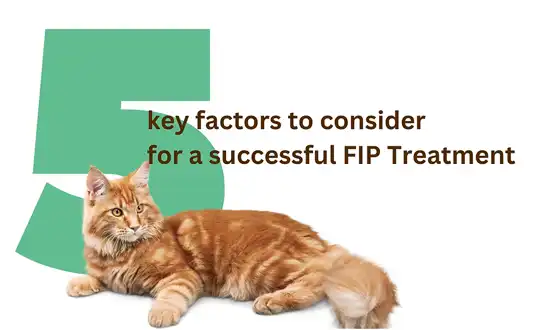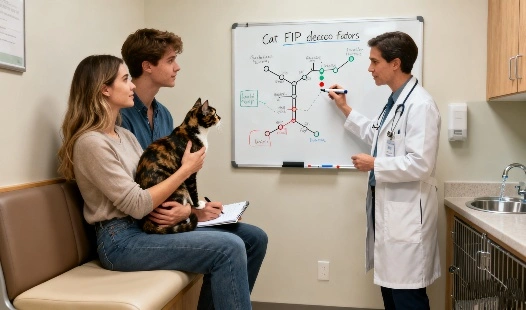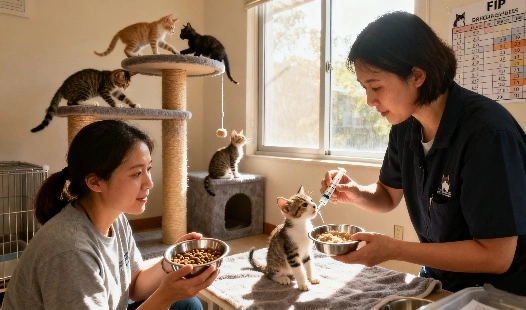Implementing a strict quarantine period for new cats is essential. This practice allows time for potential symptoms to manifest and reduces the risk of introducing FIPV to the household, especially before considering GS-441524 treatment options.
Understanding FIPV in Multi-Cat Households: Risks and Prevention
Transmission Patterns in Feline Communities
Responsible cat owners and veterinarians must prioritise GS-441524 FIP prevention because to the substantial danger that feline infectious peritonitis virus (FIPV) presents to multi-cat homes. In order to save feline populations from this terrible illness, this article explores the routes of transmission, methods of prevention, and stress reduction strategies. Having a good grasp of the mechanisms behind FIP preventive measures may greatly impact the level of risk of infection, particularly in households with numerous cats living together. Safer environments with less viral transmission may be achieved by cat owners that prioritise sanitation, reduce overcrowding, and manage stress levels. An effective FIP preventive approach also includes encouraging frequent veterinarian check-ups and ensuring robust immune health via appropriate diet. Preventing feline infectious pandemics (FIPs) requires vigilance and education on the part of cat owners.
|
|
|
Transmission Patterns in Feline Communities
The Role of Feline Coronavirus (FCoV) in FIPV Development
Feline Infectious Peritonitis Virus (FIPV) arises from specific mutations within the otherwise harmless feline coronavirus (FCoV). In multi-cat environments such as shelters or catteries, this mutation is more likely to occur due to the high rate of viral circulation and close contact between cats. Understanding how FCoV spreads through fecal contamination and shared environments is essential for effective FIP prevention. By controlling FCoV transmission through hygiene and isolation measures, the risk of it mutating into FIPV can be significantly reduced.
Shedding and Exposure Risks
FCoV is primarily shed through the feces of infected cats, making litter boxes a central source of transmission. When cats share litter areas, they can easily come into contact with contaminated material, leading to repeated exposure and reinfection. Over time, this persistent viral presence can increase the probability of genetic mutations that transform FCoV into the virulent FIPV strain. Regular cleaning, maintaining separate litter boxes, and disinfecting shared areas are therefore critical steps in limiting viral spread and protecting feline communities from infection.
Age and Immunity Factors
Age and immune health play a major role in determining a cat's susceptibility to FIPV. Kittens, whose immune systems are still developing, are at a higher risk of infection, particularly in crowded environments. Similarly, older cats or those with weakened immune responses—such as from stress, illness, or poor nutrition—are more likely to develop serious complications if exposed to FCoV. Strengthening immunity through proper nutrition, vaccinations, and stress reduction can help cats better resist infection, minimizing the chances of FCoV mutating into FIPV and causing disease.
Effective Quarantine Measures for New Cats
Isolation Protocols for Newcomers
Duration and Setup of Quarantine
A minimum 2-week quarantine is recommended. The isolated area should be comfortable, stress-free, and completely separate from other cats.
Health Monitoring During Quarantine
Regular health checks, including temperature monitoring and observation for FIP symptoms, are crucial during this period. Any signs of illness warrant immediate veterinary attention.
|
|
|
|
Stress Reduction: Key to FIPV Prevention
Environmental Enrichment
Creating a stimulating environment plays a vital role in reducing stress and promoting overall feline well-being. Cats are naturally curious and active creatures, and providing vertical spaces such as climbing trees, perches, and shelves encourages healthy exploration and exercise. Adding hiding spots, tunnels, and puzzle feeders can also stimulate mental activity and prevent boredom, which is a major contributor to stress-related behavior. Interactive toys and regular play sessions with their owners help strengthen the human-cat bond, further enhancing emotional stability. In multi-cat households, well-designed enrichment prevents tension and territorial disputes, both of which can weaken immune defenses and increase susceptibility to viral infections such as FIPV.
Maintaining Routine and Stability
Cats thrive on predictability and routine. Sudden changes in their environment, feeding times, or caretaker behavior can easily cause anxiety and behavioral problems. Maintaining a consistent daily schedule for feeding, playtime, and rest helps cats feel secure and reduces stress levels significantly. Even minor disruptions—such as moving furniture or introducing new pets—should be managed gradually to allow cats to adapt comfortably. Stability in their surroundings supports hormonal balance and immune function, which can indirectly lower the risk of diseases triggered by stress, including those caused by FIPV. A calm, predictable environment fosters emotional resilience and long-term health for all cats in the household.
Proper Resource Distribution
In multi-cat environments, ensuring that each cat has access to its own essential resources is crucial for minimizing stress and preventing conflict. This includes providing multiple litter boxes, feeding bowls, water stations, and resting areas in different parts of the home. When resources are limited or concentrated in one location, dominant cats may guard them, leading to social tension and chronic anxiety in more submissive individuals. Over time, this stress can weaken immune defenses, making cats more vulnerable to infections like FIPV. By distributing resources evenly and ensuring privacy, cat owners can create a balanced environment that promotes harmony, reduces territorial behavior, and supports better physical and emotional health.
|
|
|
|
Conclusion
Preventing FIPV in multi-cat households requires a multifaceted approach. By understanding transmission patterns, implementing effective quarantine measures, and focusing on stress reduction, cat owners can significantly reduce the risk of FIPV outbreaks. Regular veterinary check-ups and maintaining a clean environment are also crucial components of a comprehensive FIP prevention strategy.
FAQ
1. Q: Can FIPV be transmitted directly between cats?
A: FIPV itself is not directly transmitted between cats. The mutated form of FCoV that causes FIP develops within individual cats. However, the precursor virus, FCoV, is highly contagious and easily spread in multi-cat environments.
2. Q: How effective is GS-441524 in treating FIP?
A: GS-441524 has shown promising results in treating FIP, with high success rates reported in clinical studies. However, it's important to note that prevention remains the best approach to managing FIP in multi-cat households.
3. Q: Are certain cat breeds more susceptible to developing FIP?
A: While FIP can affect any cat breed, some studies suggest that certain pedigree breeds, such as Bengals, Birmans, and Ragdolls, may have a higher predisposition to developing the disease. However, environmental factors and individual immune responses play a more significant role in FIP development.
Discover the Power of GS-441524 for FIP Management
We at BLOOM TECH know how difficult it may be to control FIP in homes with more than one cat. For felines diagnosed with FIP, our top-notch GS-441524 formulation provides a glimmer of hope. Our dedication to honesty, dependability, and support for our customers allows us to be a reliable partner in the battle against this terrible illness for both feline and veterinary professionals. Come see for yourself how BLOOM TECH is different in FIP management—where compassion and excellence meet.
For more information on our GS-441524 products or to discuss your specific needs, please contact our dedicated team at Sales@bloomtechz.com. As a leading GS-441524 supplier, we're here to support you every step of the way in your FIP prevention and treatment journey.
References
1. Addie, D. D., & Jarrett, O. (2006). Feline Coronavirus Infections. In C. E. Greene (Ed.), Infectious Diseases of the Dog and Cat (3rd ed., pp. 88-102). Saunders Elsevier.
2. Pedersen, N. C. (2014). An update on feline infectious peritonitis: Diagnostics and therapeutics. The Veterinary Journal, 201(2), 133-141.
3. Kipar, A., & Meli, M. L. (2014). Feline Infectious Peritonitis: Still an Enigma? Veterinary Pathology, 51(2), 505-526.
4. Drechsler, Y., Alcaraz, A., Bossong, F. J., Collisson, E. W., & Diniz, P. P. (2011). Feline coronavirus in multicat environments. Veterinary Clinics of North America: Small Animal Practice, 41(6), 1133-1169.

Echo
9 years of experience in chemical articles; Doctoral degree; Organic Chemistry major; R&D-4 Dept; Technology support; R&D engineer
Anticipating your Business & Technology support inquiry
Please send us the products that interest you, and we will provide you with one-on-one service
Recommended Blog

What Are the Side Effects of GS-441524? And How to Manage Them Effectively?

GS-441524 Injection Site Issues: What to Do About Redness and Lumps?











_副本_1760932255295.webp)






